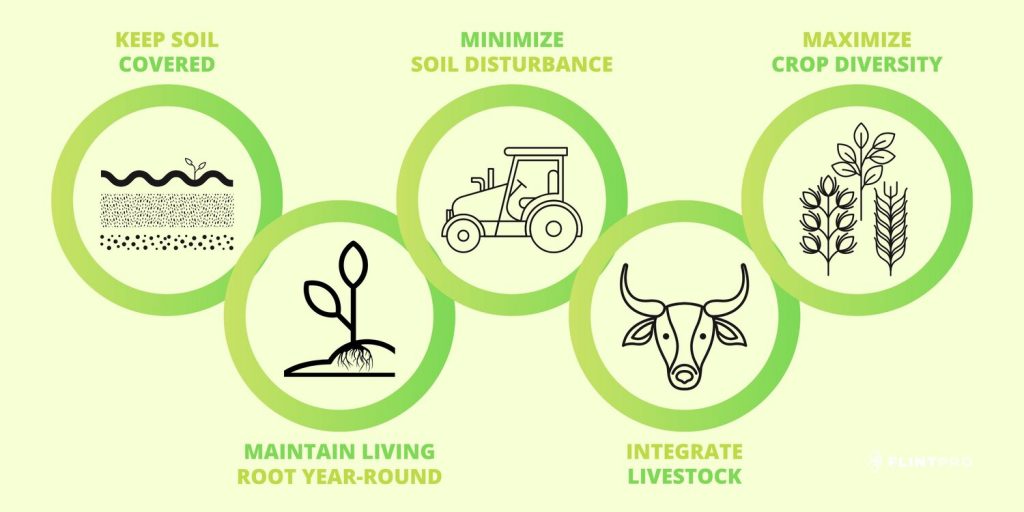“Mycorrhizal fungal networks are a major global carbon sink. When we destroy them, we sabotage our efforts to limit global heating”.

For many years the world has been looking for solutions to solve the climate crisis.
Significant research has been conducted to find solutions to global warming, but this time, the result is beyond all expectations. Mycologist and medical researcher Paul Stamet found that mushrooms play a large role in solving climate change by sequestering carbon. Previously it was thought that carbon was stored in forest floor waste, such as dead leaves and pine needles, but research like Stamets’ has found that a great deal of carbon is actually stored below the surface of the soil in complex fungal root networks. Certainly, the first question that comes to mind should be how can mushrooms solve global warming?
How Can Mushrooms Help Solve the Climate Crisis?
Fungi are largely invisible ecosystem engineers. Most live as branching, fusing networks of tubular cells known as mycelium. But what is mycelium? If you’ve ever pulled up a mushroom, you may have noticed a fine web of whitish material. These are actually intricate root systems that not only feed the fungi growing from them, but also clean soil toxins, sequester carbon, and supply fresh nutrients to surrounding plant life1. Through fungal activity, carbon floods into the soil and makes underground ecosystems that store 75% of all terrestrial carbon. In addition, fungi lie at the base of the food webs that support much of life on earth. Fungal mycelium has been serving as plant root systems for tens of millions of years until plants evolved their own. This association transformed the planet and atmosphere – the evolution of plant-fungal partnerships coincided with a 90% reduction in the level of atmospheric carbon dioxide2.

Fungal Network Destruction: An Alarming Situation
Climate change strategies, conservation agendas, and restoration efforts typically overlook fungi and focus overwhelmingly on above ground ecosystems.
Some research has shown that we are destroying the planet’s fungal networks at an alarming rate. Based on current trends, more than 90 % of the earth’s soil will be degraded by 2050. The main cause of this destruction is modern industries, from agriculture to forestry. They have failed to take account of life in the soil. Despite the fact that mycorrhizal fungi supply as much as 80% of the plant’s nutrients, intensive farming practices – through a combination of plowing and application of chemical fertilizers, pesticides and fungicides – severely reduce the abundance, diversity, and physical integrity of the fungal network. Logging wreaks havoc on the ground, decreasing the abundance of mycorrhizal fungi by as much as 95%, and the diversity of fungal communities by as much as 75 %. In addition, a large study published in 2018 states that the alarming deterioration of tree health across Europe was caused by a disruption to their mycorrhizal relationships, brought about by nitrogen pollution from fossil fuel combustion and agriculture fertilizer. Globally, at least 5 billions tons of carbon dioxide are sequestered within mycorrhizal networks each year, a quantity roughly equivalent to the amount of carbon dioxide emitted annually by the US (unpublished data suggests this figure is closer to 17bn tons). Even small reductions in the prevalence of fungal networks have significant consequences: a release of just 0.1% of the carbon now stored in Europe’s soils is equal to the annual emissions from 100 cars3.

Mycorrhizal fungi are keystone organisms that support planetary biodiversity; when we disrupt them, we jeopardize the health and resilience of the organisms on which we depend. Fungal networks form a sticky living seam that holds soil together – remove the fungi, and the ground washes away. The destruction of underground fungal networks accelerates both climate change and biodiversity loss and interrupts vital global nutrient cycles. “These networks should be regarded as a global public good to be mapped, protected, and restored as a matter of urgency…” according to Toby Kiers and Merlin Sheldrake.
Regenerative Agriculture as a Solution to Protect Fungal Networks
As it has been mentioned above, agriculture is one of the main cause of fungal network destruction.
In fact, intensive farming practices – through a combination of plowing and application of chemical fertilizers, pesticides and fungicides-severely reduce the abundance, diversity, and physical integrity of the fungal network. But a shift toward regenerative land practices has been shown to be beneficial for both the planet and its inhabitants. It is a shift from sustainable to restorative, with the aim of rejuvenating the soil and all ecosystem that stem from it.

Regenerative agriculture differs from traditional agriculture because it avoids tillage and utilizes cover crops. It presents a lot of benefits:
- Prevents erosion and soil degradation while keeping carbon safely stored in the soil
- Increases plant diversity and integrate livestock, creating a holistic system powered by elements in the environment working together, i.e. example, cultivating mushrooms
- Keeps the soil healthy, which helps filtering pollutants, encouraging crop growth and saving pollinators, to name a few, but it also plays a larger role in turning around the climate crisis1
Confronted by the climate emergency, which requires us to take action in each level, each of us can take some actions to help protect the fungal network. For example, becoming a climate-smart gardener, which means implementing regenerative land practices through urban agriculture, much like what IDEAS for Us is doing through the Fleet Farming program, where they are “converting underutilized lawn space into productive localized edible gardens or micro farms”.
Sources
1. Grounded. (n.d.). A new era of agriculture: how soil and mushrooms can help solve the climate crisis. The Guardian Labs. https://www.theguardian.com/climate-academy/ng-interactive/2020/nov/16/regenerative-agriculture-soil-and-mushrooms-help-solve-climate-crisis.
2. Kiers, T. and Sheldrake, M. (30 November 2021). A powerful and underappreciated ally in the climate crisis? Fungi. The Guardian. https://www.theguardian.com/commentisfree/2021/nov/30/fungi-climate-crisis-ally.
3. European Commission. (n.d.). Forests and Agriculture. https://ec.europa.eu/clima/eu-action/forests-and-agriculture_en








